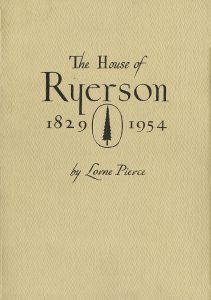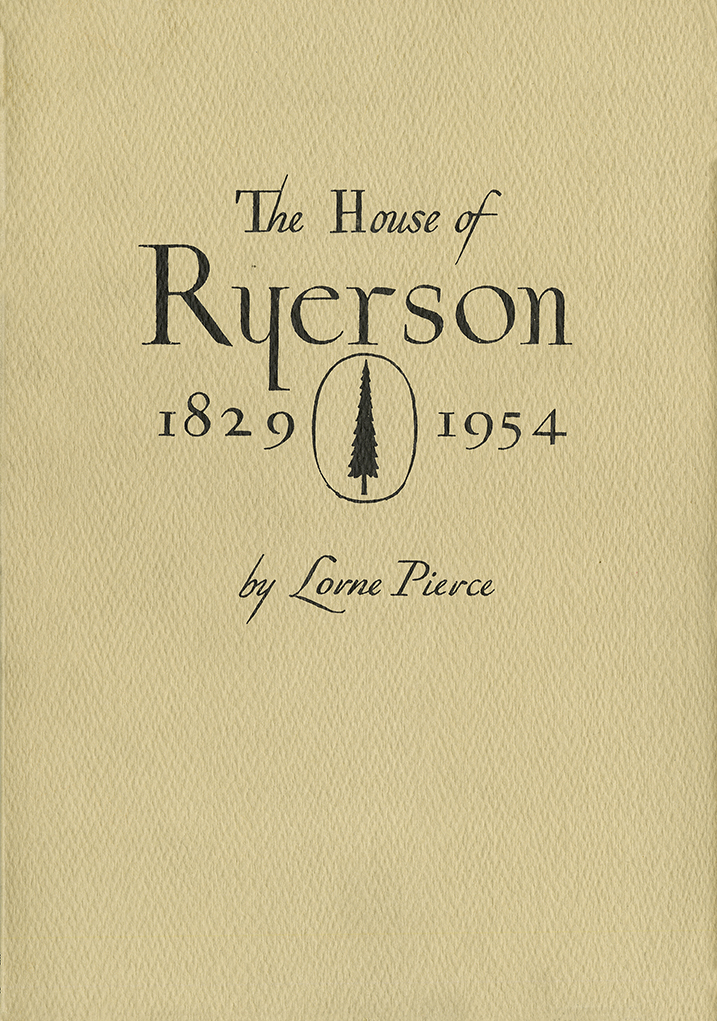Before its sale to the American subsidiary McGraw-Hill Company of Canada in 1970, Ryerson Press formed the educational and trade book publishing arm of the much larger United Church Publishing House, itself a by-product of the substantial union of Canadian Methodist, all Congregational, and most Presbyterian churches in June 1925. Prior to this union, Ryerson Press existed as part of the Methodist Book and Publishing House (MBPH), which by the end of the nineteenth century represented the largest printing, bookselling (both retail and wholesale), and publishing organization of newspapers, periodicals, and books in Canada.
The McGraw-Hill Ryerson Press Collection featured in this exhibit draws on two separate donations made in 2016 and 2018 to Ryerson University Library by McGraw-Hill Ryerson Limited, a descendent of the company formed in the immediate wake of the 1970 sale of Ryerson Press to McGraw-Hill Company of Canada. The first accrual includes approximately 3,000 books published between 1862 and 1970 under either the Ryerson Press imprint or its antecedent imprints (e.g., William Briggs, Samuel Rose). Many of these volumes retain their original dust jackets, which played a significant role in their marketing. The first accrual also includes a broad selection of Ryerson Press catalogues issued between 1924 and 1970, as well as selected archival materials, most significantly 1,800 publishing contracts. The second accrual includes many educational texts, the Makers of Canadian Literature series, and several art books, as well as selected archival materials, such as book production records chiefly from the 1940s to 1970, with a few dating from the 1930s, and photographs of Ryerson Press employees and its authors.

The purpose of this online exhibit is two-fold: first, to raise awareness and encourage use of the McGraw-Hill Ryerson Press Collection by highlighting and facilitating understanding of its rich contents; and second, to contextualize elements of the Collection through essays and case studies that take advantage of existing scholarship and offer new insights that are the direct result of certain works, series, or documents having been scrutinized as an integral part of the exhibit’s development.
We hope you will enjoy the exhibit at a leisurely pace. If, however, you have a more immediate need to examine the listings of volumes or authors’ agreements in the Collection, here are links for that purpose:
We are launching this project in the year 2019 to mark the one hundredth anniversary of the adoption of “The Ryerson Press” as the official imprint of the Methodist Book and Publishing House’s trade book division. The name was chosen to honour Egerton Ryerson (1803-1882), who in 1829 had been elected by the Methodist Episcopal Church in Canada to serve as first editor of its denominational newspaper, the Christian Guardian, the foundation stone on which the MBPH came to be built. One hundred years ago, Egerton Ryerson was known for his role in advancing the interests of Methodism, and for his work as intermittent editor of the Christian Guardian between the years 1829 and 1840. In 1841, upon the incorporation of the Methodists’ Victoria College in Cobourg, Upper Canada, Ryerson was named its first president. Three years later, effectively changing careers from clergyman to government bureaucrat, he was appointed Superintendent of Schools in Upper Canada.
The educational reforms that Ryerson brought to Upper Canada (which later became the province of Ontario) included the improvement of teacher training through the establishment of the Normal School system. Ryerson’s achievements in educational reform would have resonated with the Methodist church officials who had oversight of the publishing arm when they chose the name Ryerson and registered it for use on all of its trade publications, effective 1 July 1919.
Today, we acknowledge that Egerton Ryerson is a controversial figure. In a letter dated 26 May 1847 to George Vardon, Assistant Superintendent of Indian Affairs, Ryerson outlined his suggestions “as to the best method of establishing and conducting Industrial Schools for the benefit of the aboriginal Indian Tribes.” The fact that Ryerson’s design for “Industrial Schools” contributed to the development of Canada’s residential school system has led to the reexamination of his cultural legacy.
Acknowledgements: The curatorial team behind this exhibit (Ruth Panofsky, Janet Friskney, Val Lem, Sally Wilson, Clive Powell, and Art Seto) acknowledges the generous financial support of the Social Sciences and Humanities Research Council of Canada; Ryerson University’s Library and Archives, Faculty of Arts, Office of the Vice-President, Research and Innovation; and one private donor. We also wish to thank Ryerson University Library’s cataloguers for their meticulous work. We are grateful to our guest and student contributors for their essays and case studies — each is credited on the relevant page of this exhibit — and to our designers Patrick Fung, Kelsey Myler, and Yiyi Zhang, for bringing this exhibit to life.





